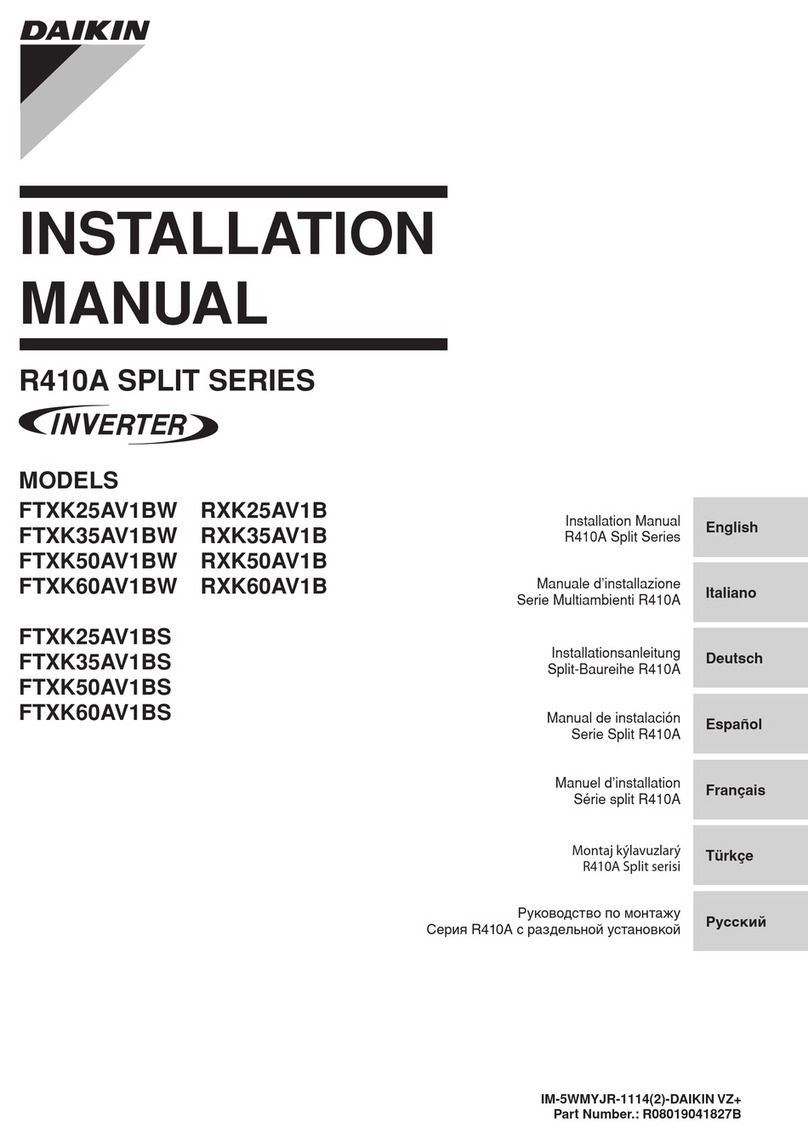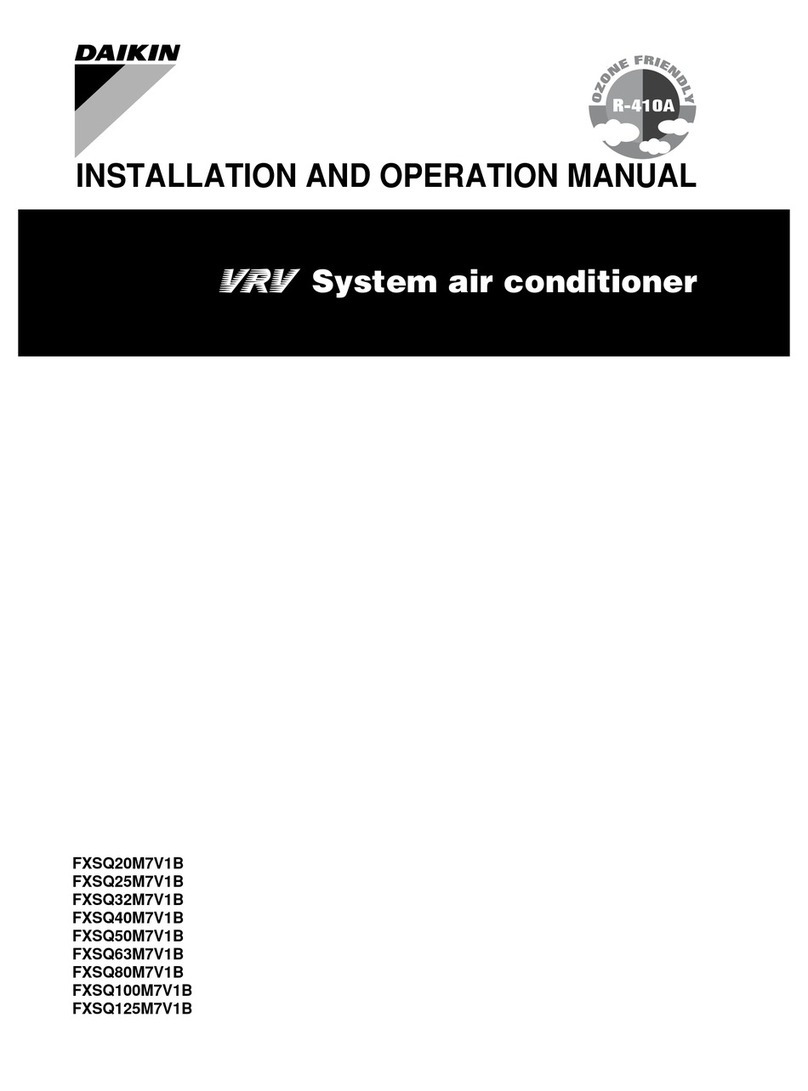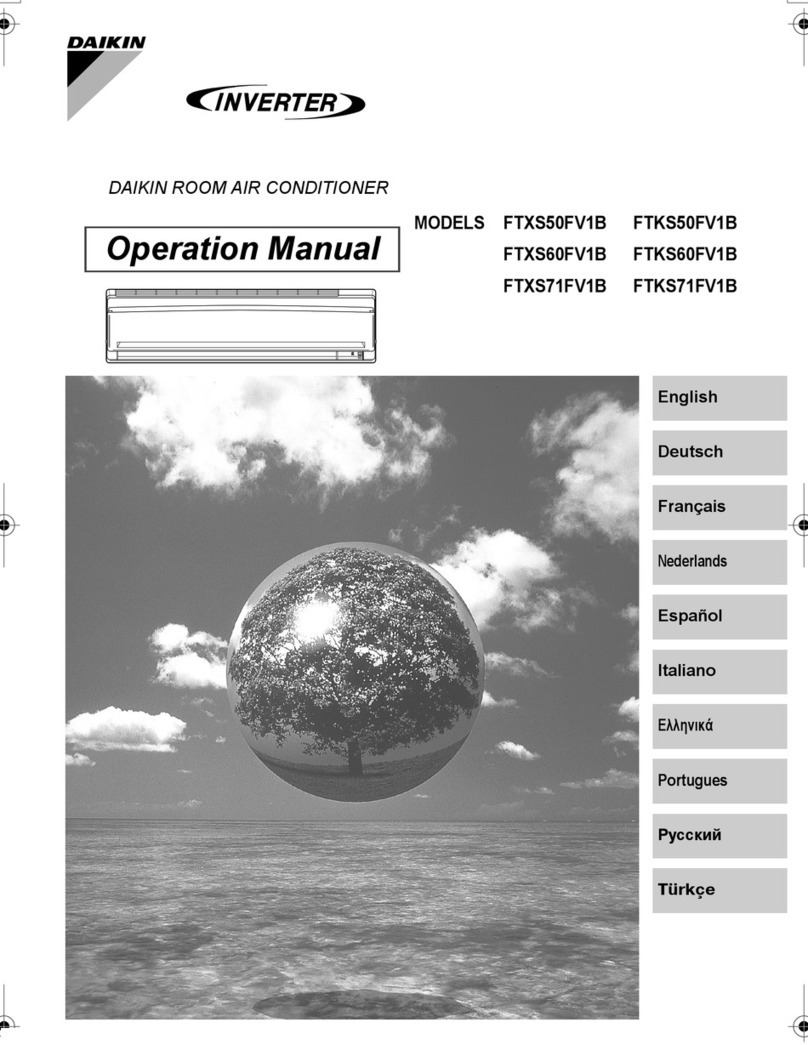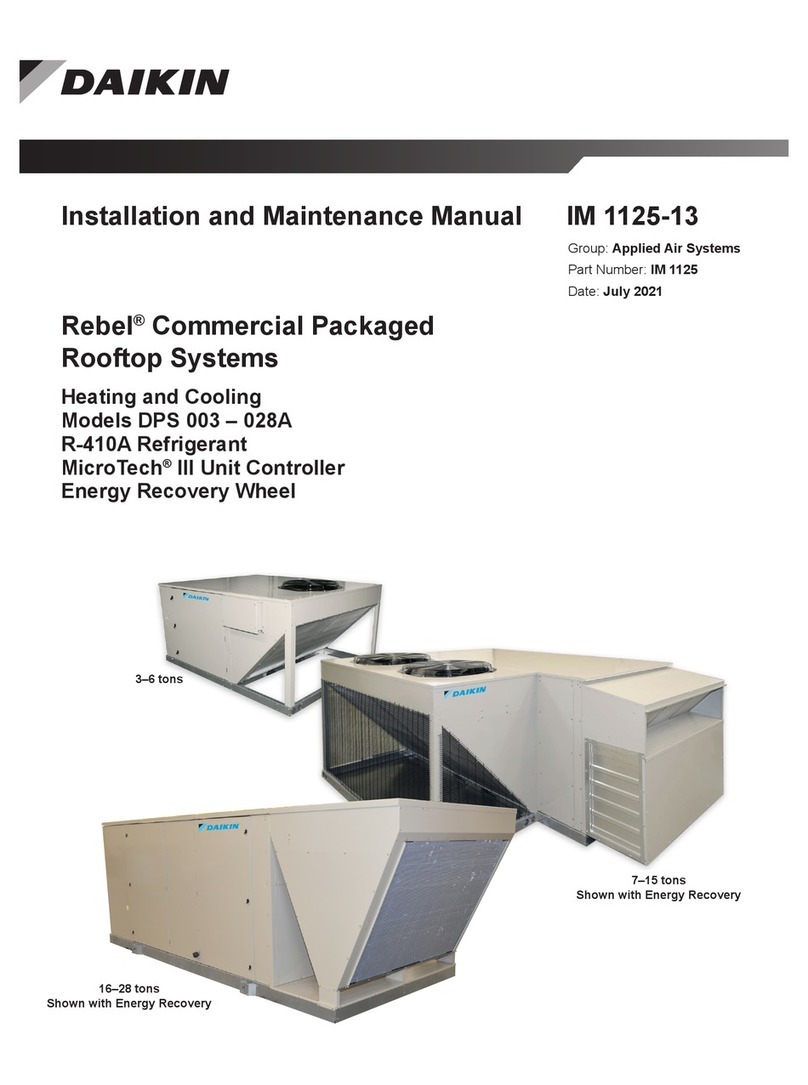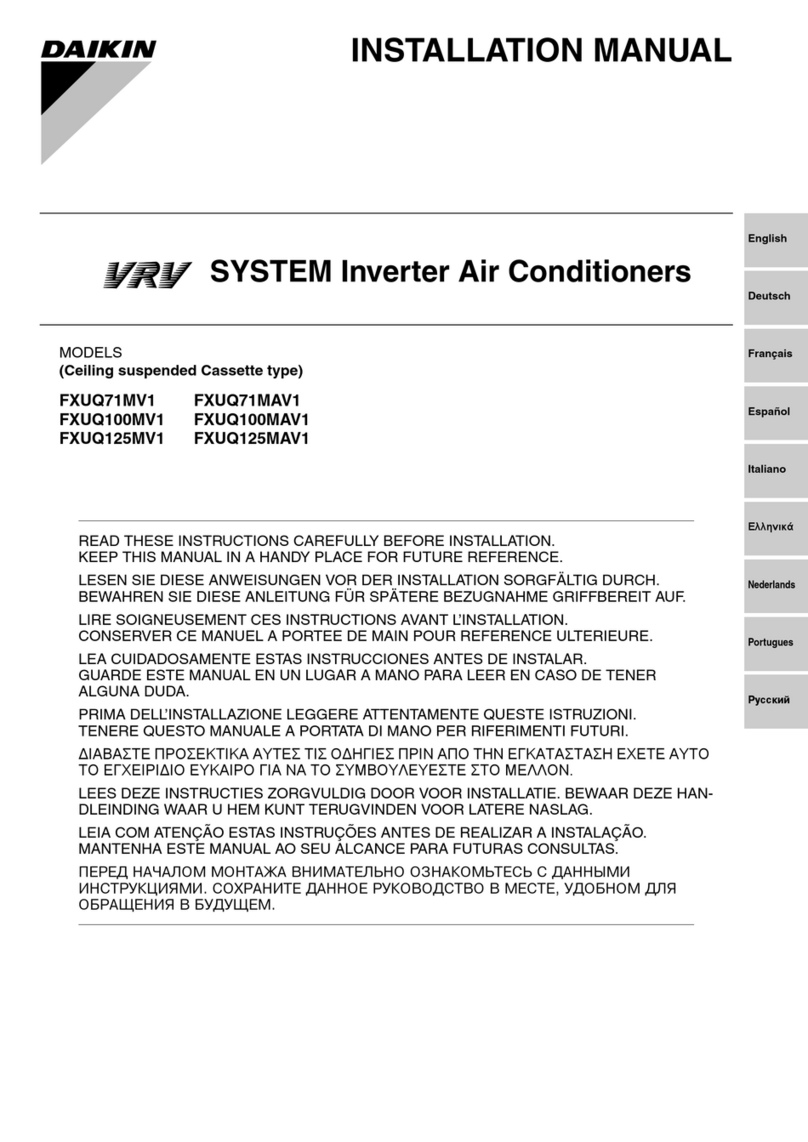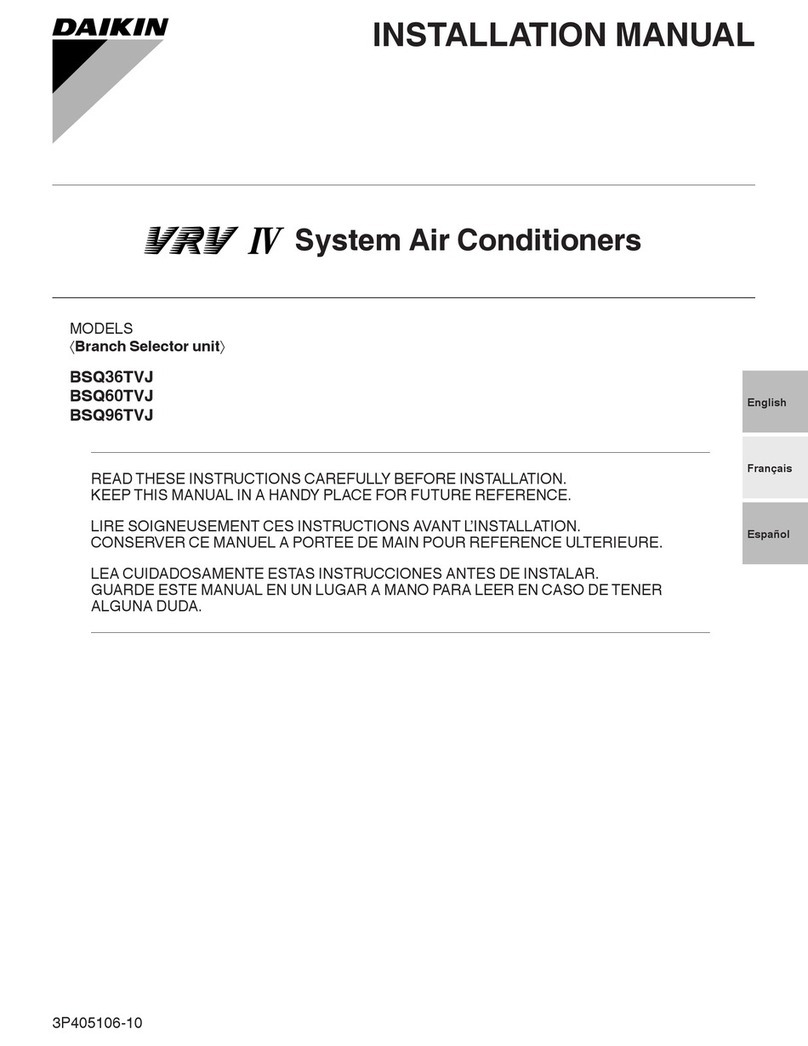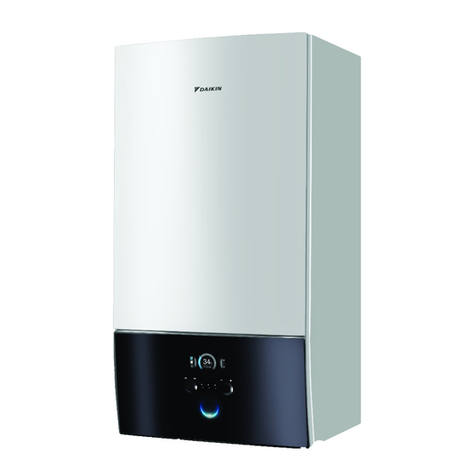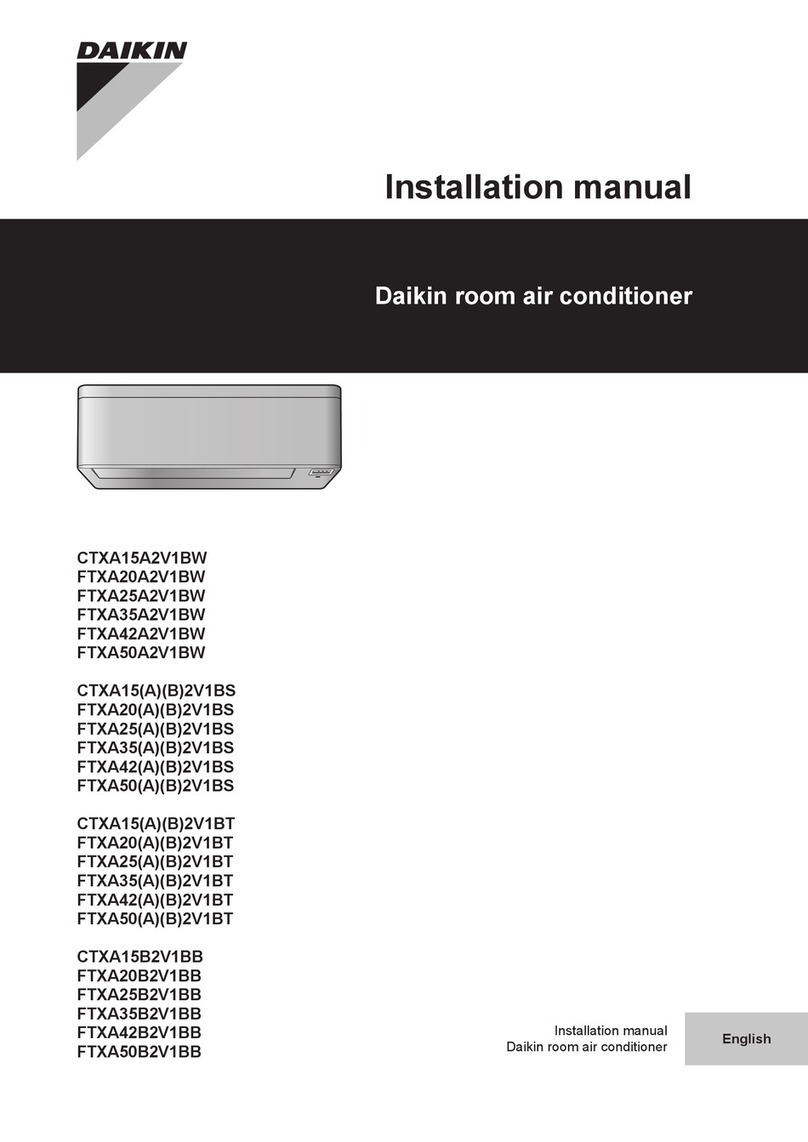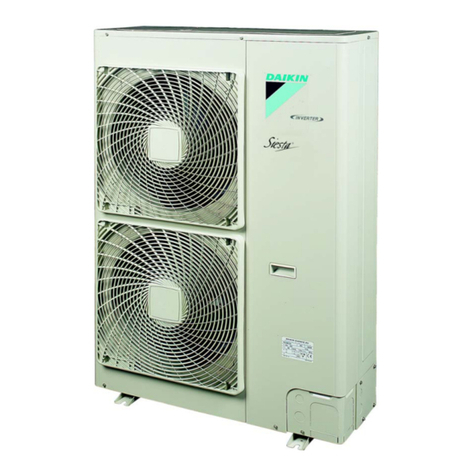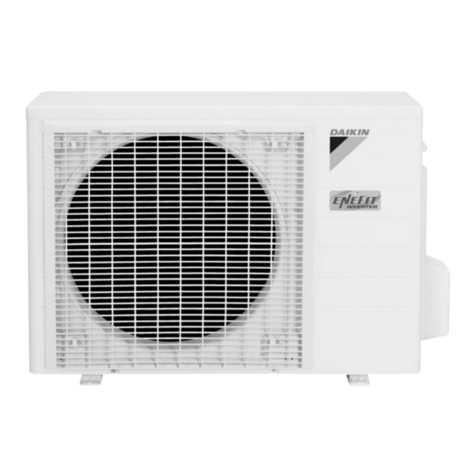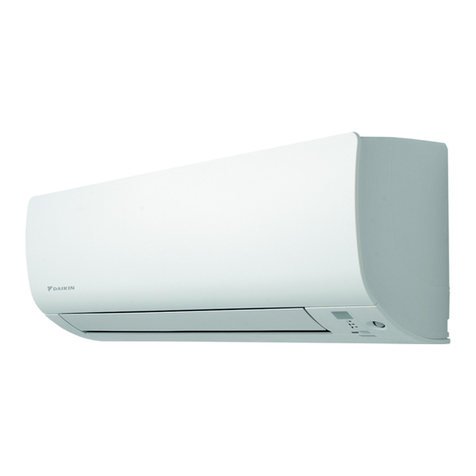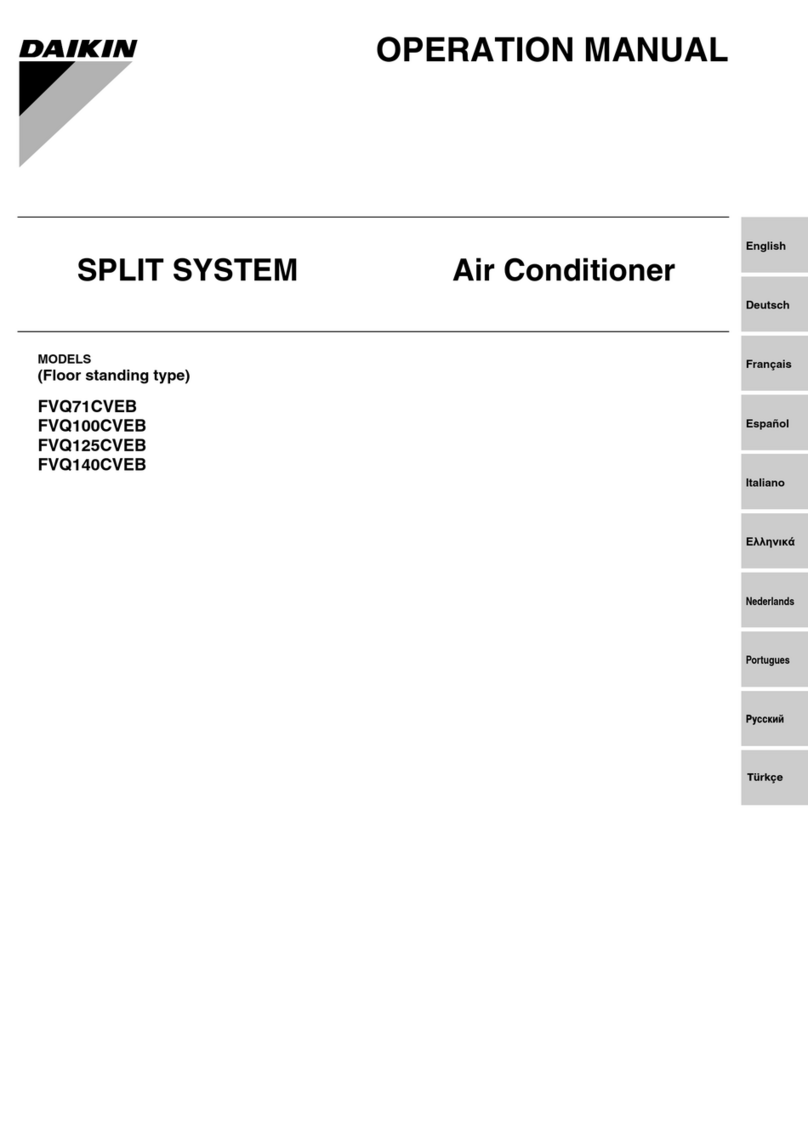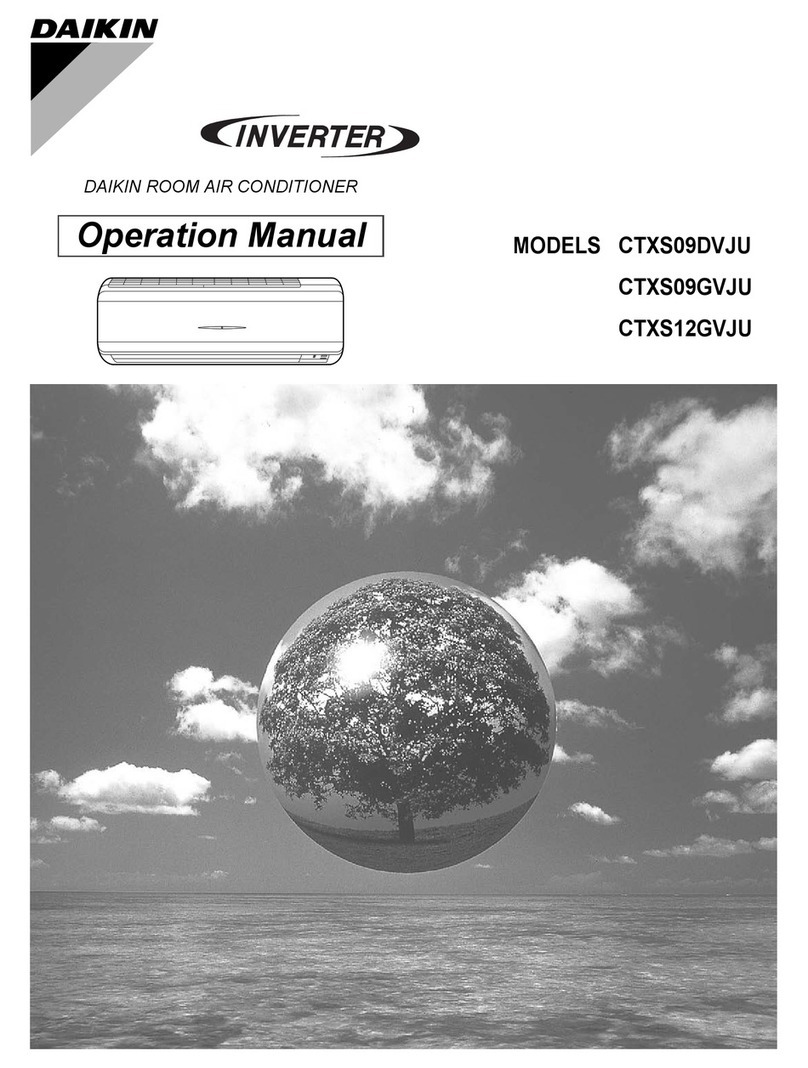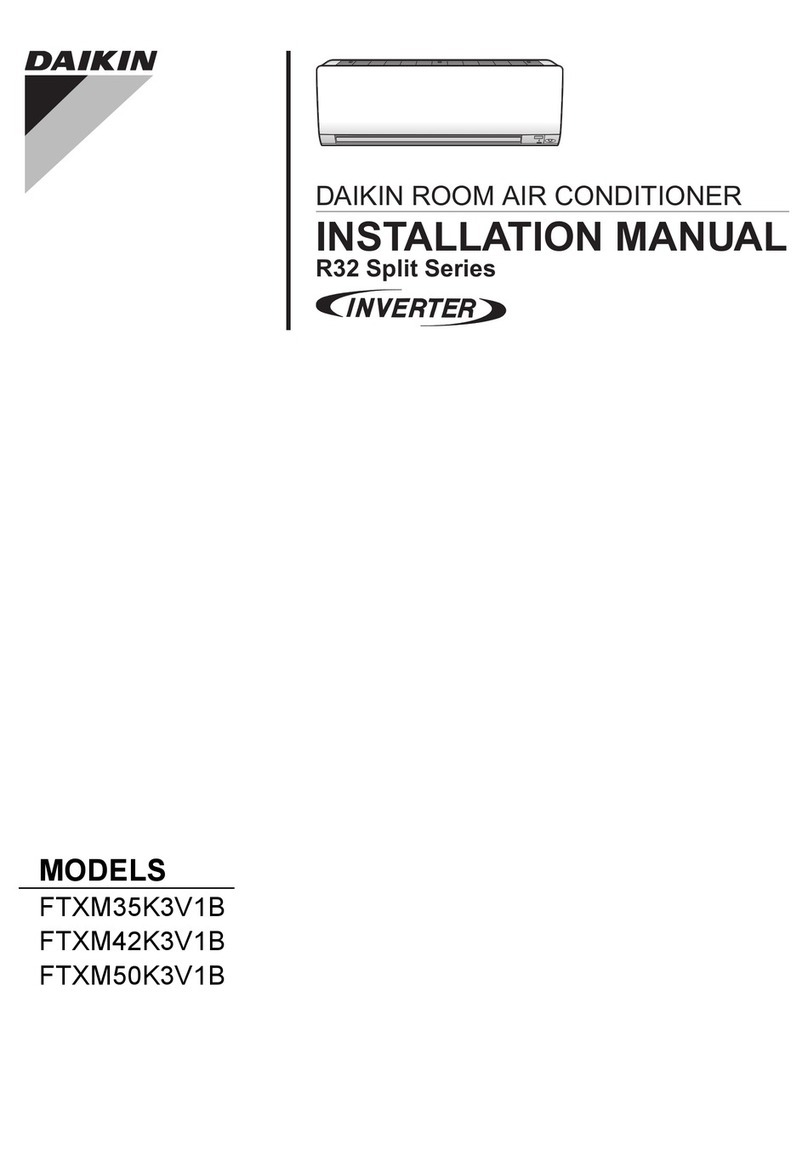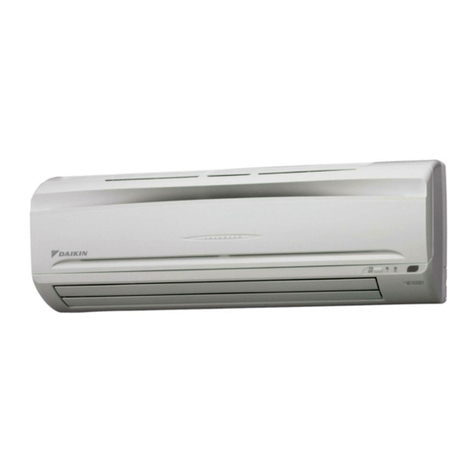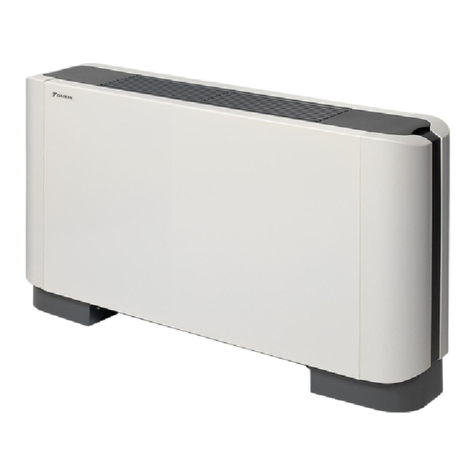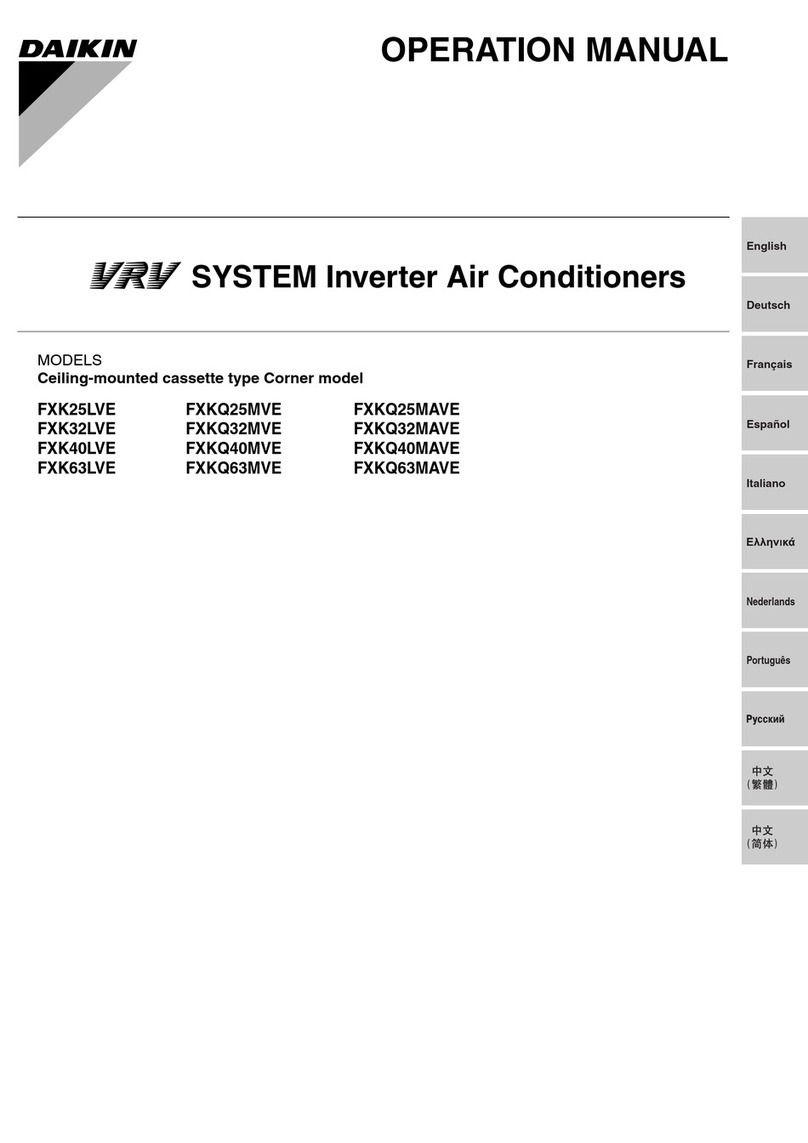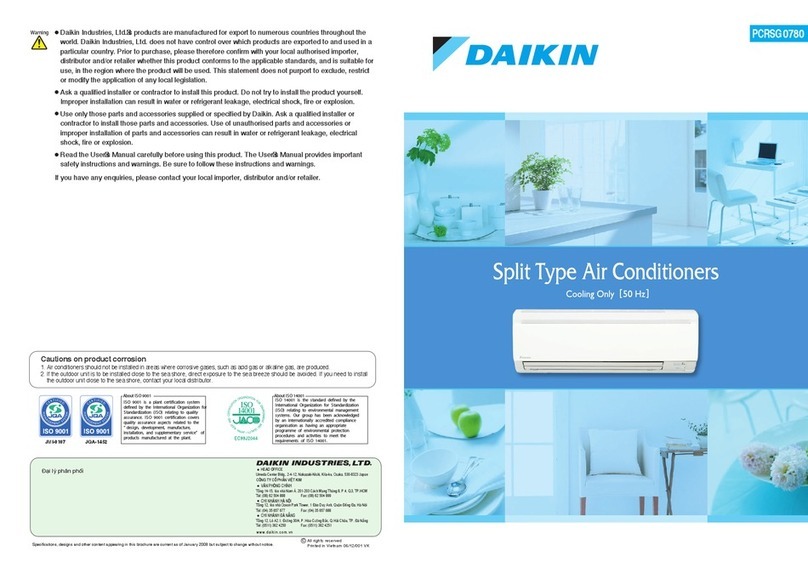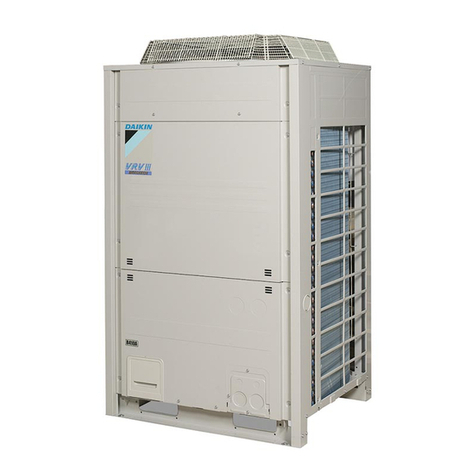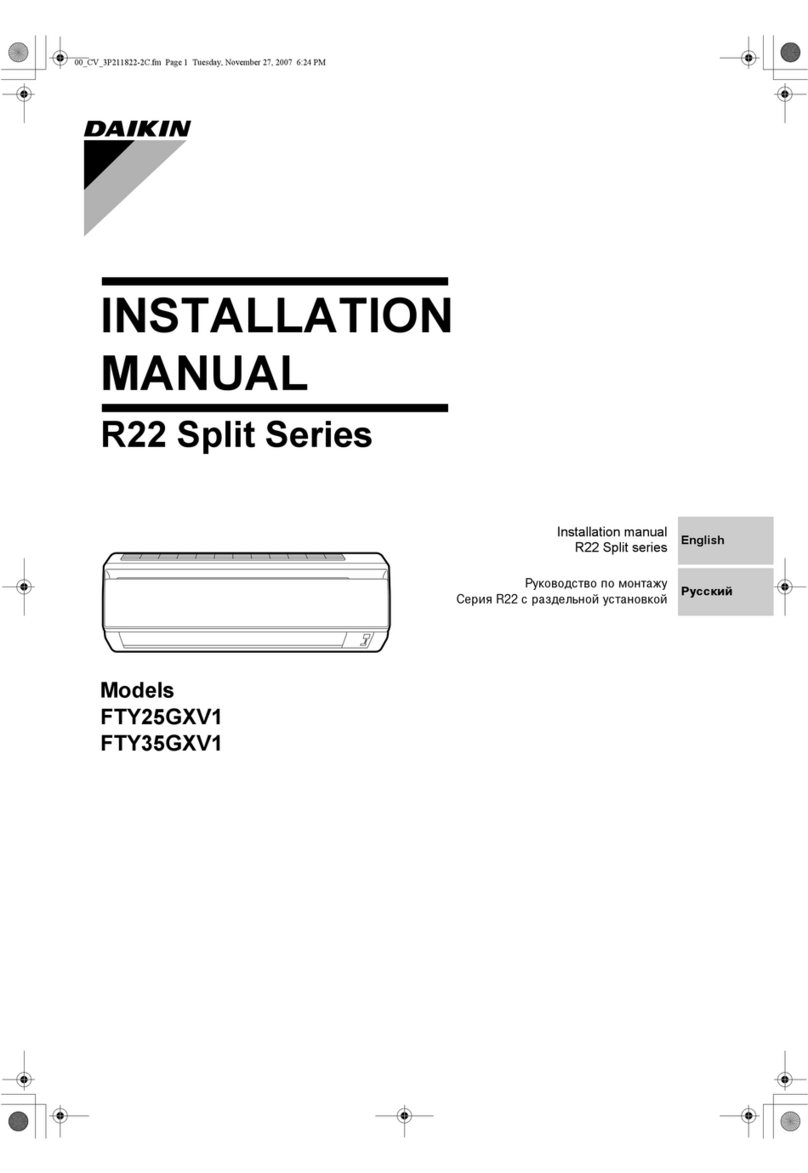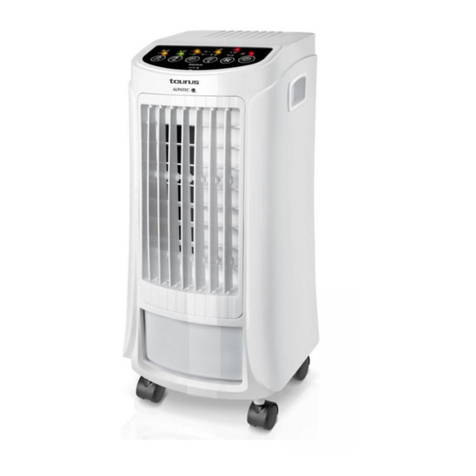4.2. FIELD CABLE AND FIELD FUSE
4.2.1. Cautions
- Use solid core cables to avoid loosening of the wires.
- Do not use flexible or stranded wires to avoid the risk for short circuit!
- Remove maximum 8mm of the PVC wire insulation when connecting the wires to the terminals.
(see figure 5)
4.2.2. Minimum recommended field cables and field fuses
POWER SUPPLY wire size
MODEL PHASE FIELD FUSE interconnection
RY35 1~ 16A 1.5 mm
2
RY45 1~ 20A 1.5 mm
2
5. FAULT DIAGNOSIS
FAULT DIAGNOSIS - OUTDOOR PRINTED CIRCUIT BOARD
1) Check the interunit wiring between indoor and outdoor units to ensure that all wire connections are correctly connected.
2) Turn the power OFF for at least 5 seconds and turn it ON again. If the same LED display recurs, the diagnosis can be determined.
LED-A LED-1 LED-2 Meaning of display and actions to be taken
green red red NORMAL CHECK THE INDOOR UNIT
PROTECTIVE DEVICES ARE ACTIVATED
FAULTY SENSOR (HPS, HEAT EXCHANGER OR SUCTION THERMISTOR IS OPEN OR SHORT CIRCUITTED)
--- --- FAULT ON OUTDOOR PRINTED CIRCUIT BOARD
--- --- ABNORMAL POWER SUPPLY OR FAULT ON OUTDOOR PCB 3)
: LED ON : LED OFF : LED FLASHING --- : INSIGNIFICANT
3) Turn the power OFF for at least 5 seconds and disconnect the connection wire (2), then turn it ON again.
If LED-A flashes, the indoor PCB is faulty.
4) After checking, turn the power OFF for at least 5 seconds, to reset the LED display.
6. DISPOSAL REQUIREMENTS
Dismantling of the unit, treatment of the refrigerant, oil and eventual other parts, should be done in accordance with the relevant local and national regulations.
Evacuation duration:
Gas side piping size Piping length
15 m > 15 m
ø 12.7 mm 15 minutes 20 minutes
ø 15.9 mm 20 minutes
Step 5: - Completely close the low pressure valve first.
- Remove the vacuum pump from the gauge manifold, and then turn off the
vacuum pump.
- Leave the system as it is for 2 minutes and confirm that the low pressure
gauge readout does not decrease.
- If the needle moves back, ingress of water inside the system or leakage at
the joints are considered.
- Check every joint and then loosen the nut once and tighten it again firmly.
After that, repeat step 2 to 5.
Step 6: Remove the blind cover of the gas stop valve and liquid stop valve.
Step 7: Open the gas stop valve for about 3 seconds with a hexagon wrench, then
quickly close it firmly.
Step 8: Check the connections marked with for leakage.
- Apply soapsuds to the connections and inspect carefully.
- After checking, wipe them off completely.
Step 9: Disconnect the gauge manifold.
Step 10: Open the liquid and gas stop valve completely.
Step 11: Tighten up the blind cover of the liquid stop valve.
Step 12: Tighten up the service port cover and the blind cover of the gas stop valve.
4. FIELD WIRING
4.1. FIELD WIRING
All field wiring and components must be provided by a licensed electrician and
must comply with the relevant local and national codes.
Be sure to use a dedicated power circuit. Never use a power supply shared by
another appliance.
- Wire in accordance with the wiring diagrams
(see figure 7)
and outlook diagram
(see figure 1)
. The required electrical power supply is stated on the unit's
nameplate.
Parts table:
.................... protective earth
C1R,C2R ......... running capacitor
F1U .................. field fuse
F6U,F7U .......... fuse
K1M ................. compressor contactor
L ....................... live
M1C ................. compressor motor
M2F ................. fan motor
MR ................... magnetic relay
N ...................... neutral
PCB ................. printed circuit board
Q2L .................. overload protector (compressor)
Q3M,Q4M ........ thermal protector
Q5E ................. field earth leak detector
R1T .................. outside air thermistor
R4T .................. defrost thermistor
Rth1 ................. PCB temp. thermistor
S1,S3,... ........... connectors on PCB
S2PH ............... high pressure switch
SA .................... surge arrester
T1R .................. transformer
X1M ................. terminal strip
X10A,X11A,... .. connector
Y2R .................. reversing solenoid valve
Z1F .................. noise filter
BLK .................. black wire
BLU .................. blue wire
BRN ................. brown wire
GRN/YLW ........ green/yellow wire
ORG ................ orange wire
PNK ................. pink wire
RED ................. red wire
WHT ................ white wire
YLW ................. yellow wire
PPL .................. purple wire
